9 examples of Email Marketing Automation
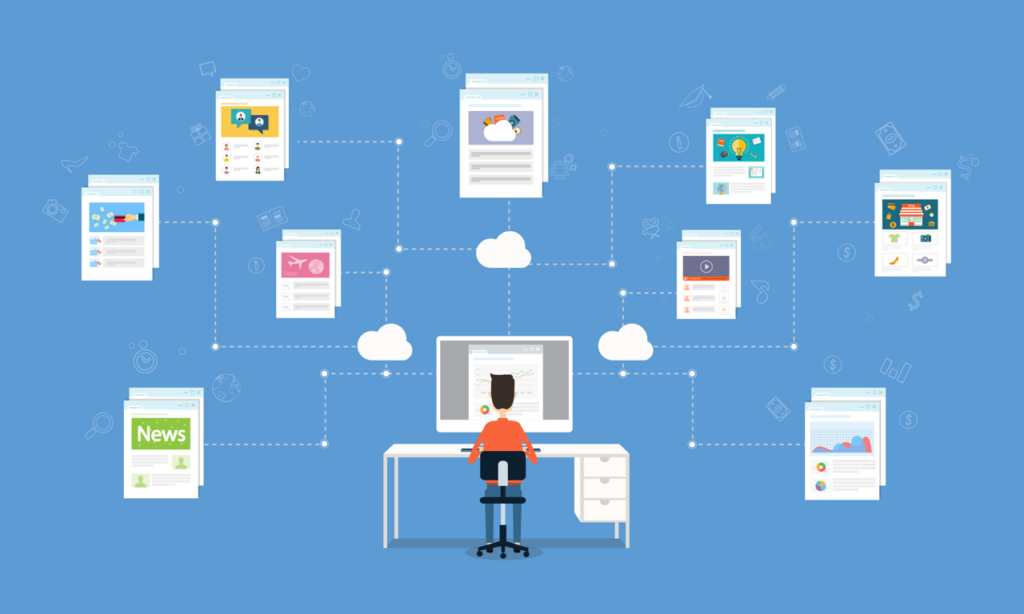
How Email Marketing Automation works and its benefits
It is currently possible to automate a large part of your email marketing actions we do. In fact, the more automated the communications we send to our subscribers, the more effective the actions will be and the greater the time and cost savings. To implement a strategy of email marketing automation we will need to define a series of rules that will determine a pattern of actions that will happen depending on the user's behaviour.
It would work as follows: first we configure the email to be sent automatically to a person when they meet a certain pattern. We set it up once and as more users meet the trigger we define, the email is sent without us having to do anything else. In this way we have a personalised email marketing, relevant y automated which translates into more opens, clicks and visits and revenue for our business.
Next we will see what kind of automated emails we can integrate into our email marketing and what advantages they offer:
- Welcome email
This is the email that we automatically receive after subscribing to the newsletter of a certain brand or company. They can send us directly the welcome email or have a preliminary step to confirm the subscription. They are often accompanied by a welcome offer that encourages the user to make their first purchase. Here is an example of Stradivarius. In this case, they have a confirmation email and a welcome email implemented.
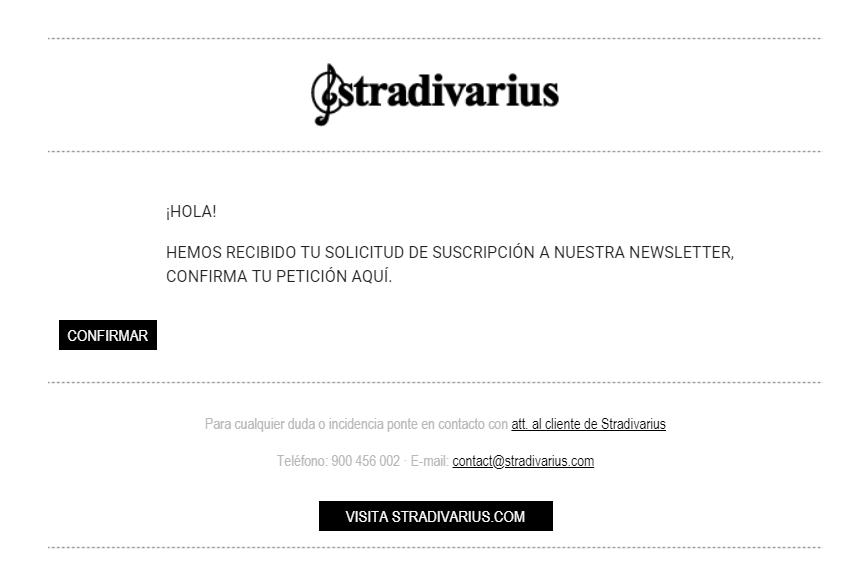
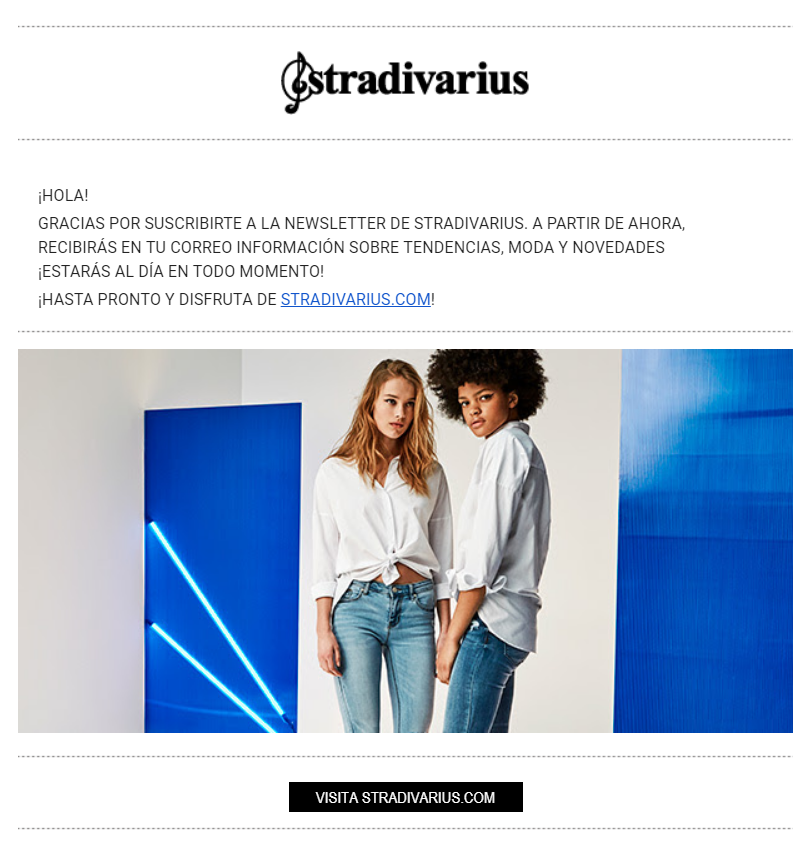
If you have not yet implemented a welcome email or you are simply looking to renew it, we leave you with 6 different versions that you can use to receive your subscribers. As we always say, the key is to choose the one that best suits the needs of your business.
- Product replenishment email
Sometimes when we want to buy a product and it's not available, we are given the option to leave our email address in order to be alerted when the stock is back in stock.. This gives us the opportunity to not lose the user's initial interest in the product and automatically increases the chances that in the future, when they receive the alert, they will end up making the transaction. This makes the product replenishment email one of the most useful and beneficial examples of Email Marketing Automation for both the user and the brand.
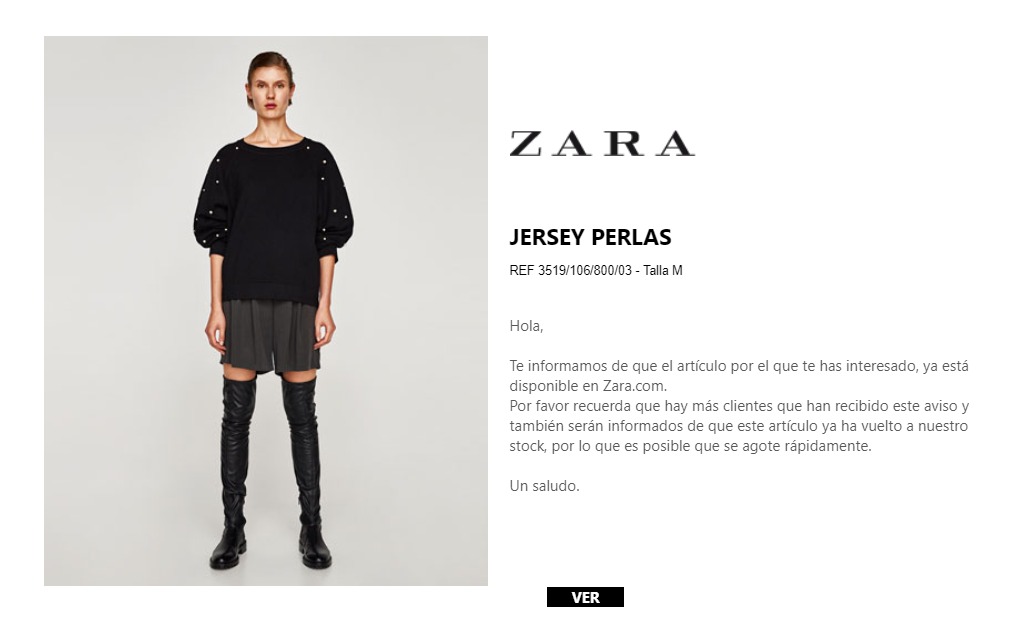
- Purchase confirmation email
This is the email that the customer automatically receives when they have just made a transaction. Normally they are thanked for their purchase and informed of the shipping and delivery process of the product they have purchased. This email seeks to involve the user in the whole process.
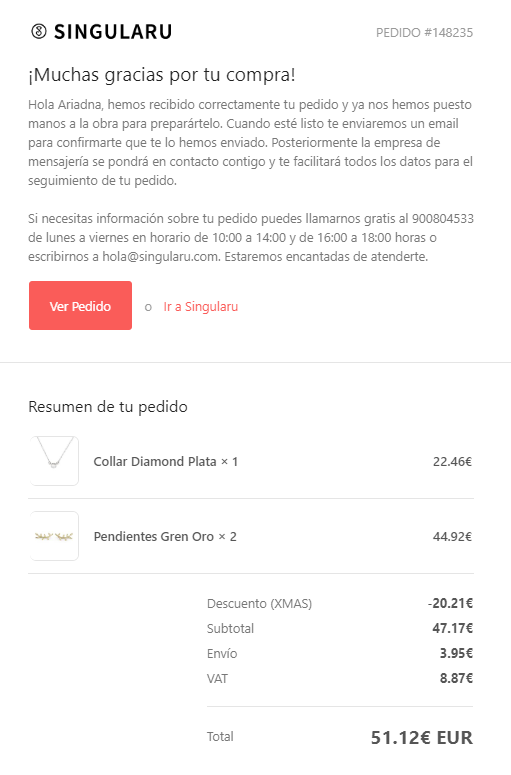
- Order email prepared or sent
This email is sent automatically once the order placed by the user has left the warehouse. As in the previous case, implementing it helps us to keep the customer informed at all times and makes the whole experience much more satisfactory.
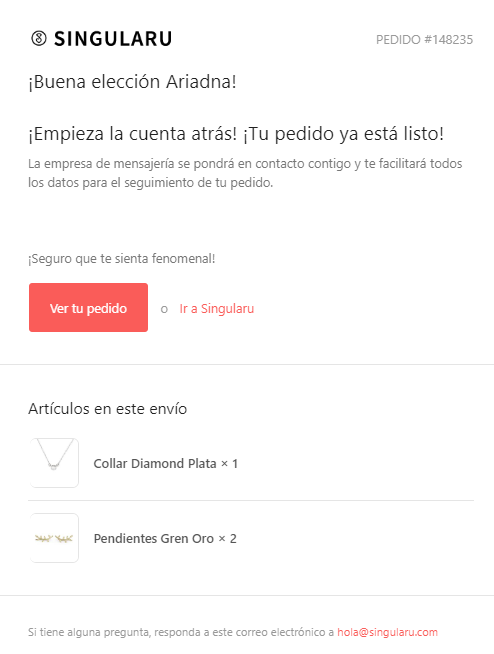
- Email to evaluate the purchase and/or the product
This email is sent once the user has received their order to thank them once again for their purchase and to ask for a rating of the experience with the brand and the product itself. Although not many businesses have implemented this type of email, the few that do use it demonstrate the great interest they have in making the sale of their products an experience, as it allows them to know the degree of customer satisfaction and where they can improve.
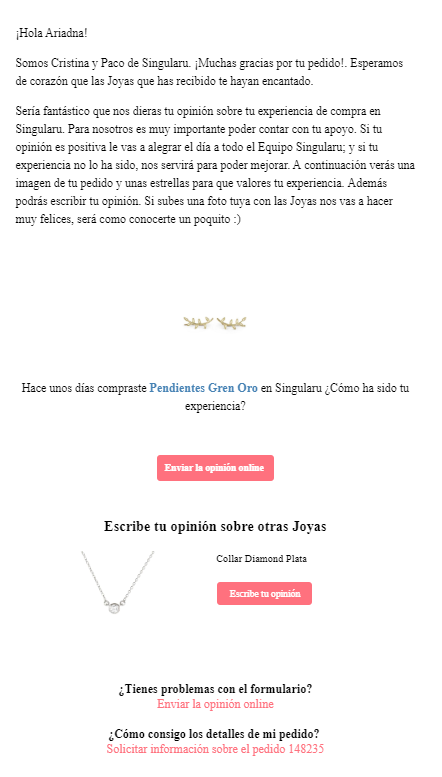
- Birthday Email
As the name suggests, this is the email we send to a user on their birthday. It is a clear component of the customer loyaltyThe aim is to ensure that the subscriber has the brand in his or her top of mind. Often, the greeting is accompanied by a discount or a free gift to achieve a conversion, therefore, another of its objectives is to convert.
In order to implement a birthday email it is necessary that at the time of registration or subscription the user is asked for his/her date of birth in order to store the data and make use of it in due course.
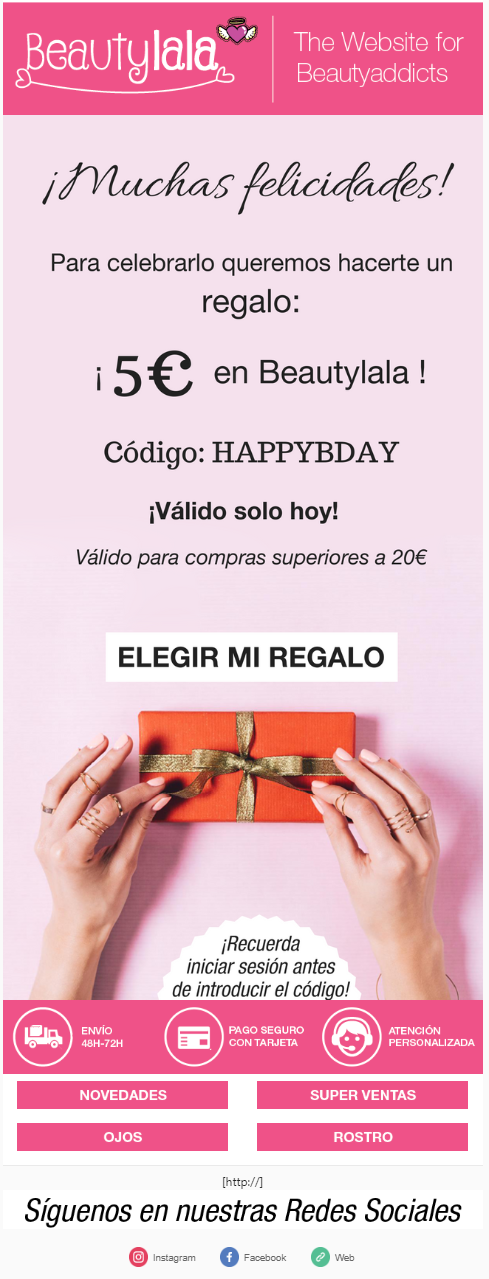
- Abandoned cart recovery email
This email is automatically sent when a user you have left a product in your shopping cart but did not complete the transaction. After a pre-determined time, the email is sent and when the subscriber receives it, they see a reminder that they have those products stored in their basket. Often, the email copy is intended to prompt the user to complete the purchase.
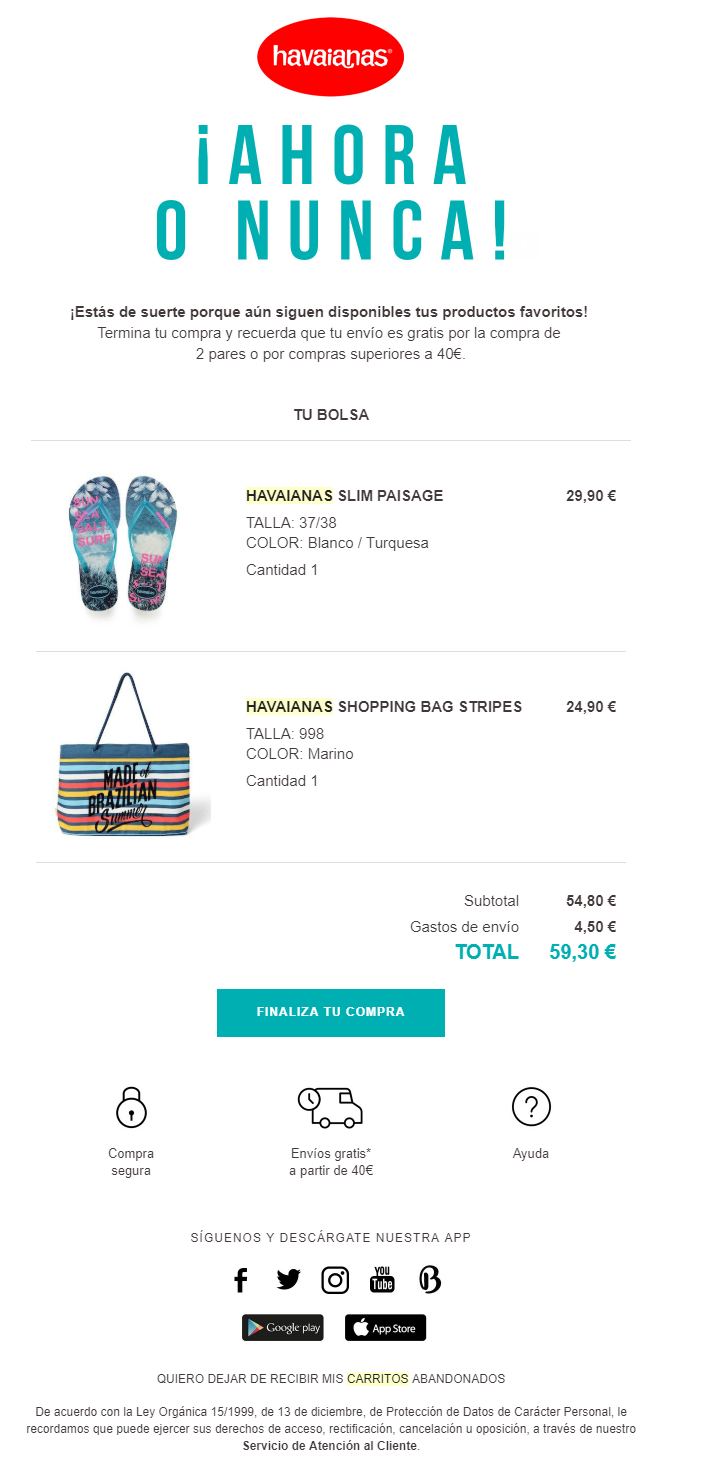
-
Up-selling, cross-selling and product recommendation emails
When we talk about the term up sellingIn the case of a sales technique, we are referring to a sales technique that aims to induce the customer to buy those products that are more expensive or that we have a certain interest in selling. On the other hand, in the cross selling We try to get the customer to buy another product in addition to the one they are already planning to buy or we try to take advantage of a past sale to offer them a complementary product. These are techniques that are gaining more and more prominence in the field of email. As we can see below, Amazon is a clear example of this.
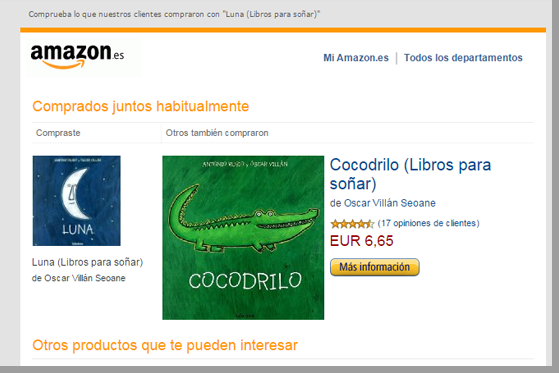
As for the product recommendationsare not only a great way to make email content relevant, enticing and accessible, but they also help us to significantly increase our CTR. With them we get to have a personalised and relevant email for the user.
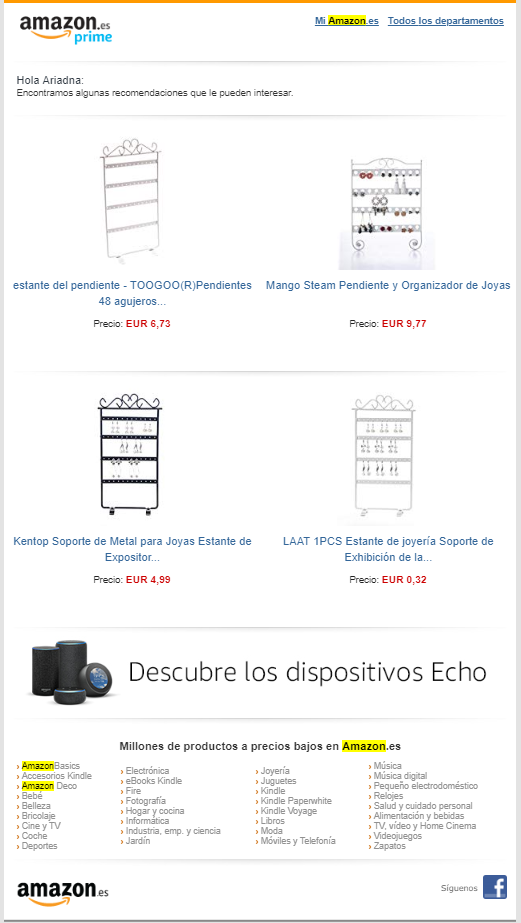
-
Loyalty emailThe loyalty emails A strategy of Email Marketing Automation also adds up to a lot of points. They have the function of taking care of the customer and give them reasons to continue trusting the brand. What kind of loyalty emails can we implement? From those that remind the subscriber how many points they have accumulated to those that remind them how many points they still need to get a specific offer or change to a different section. Here are two good examples Sephora y Tous.
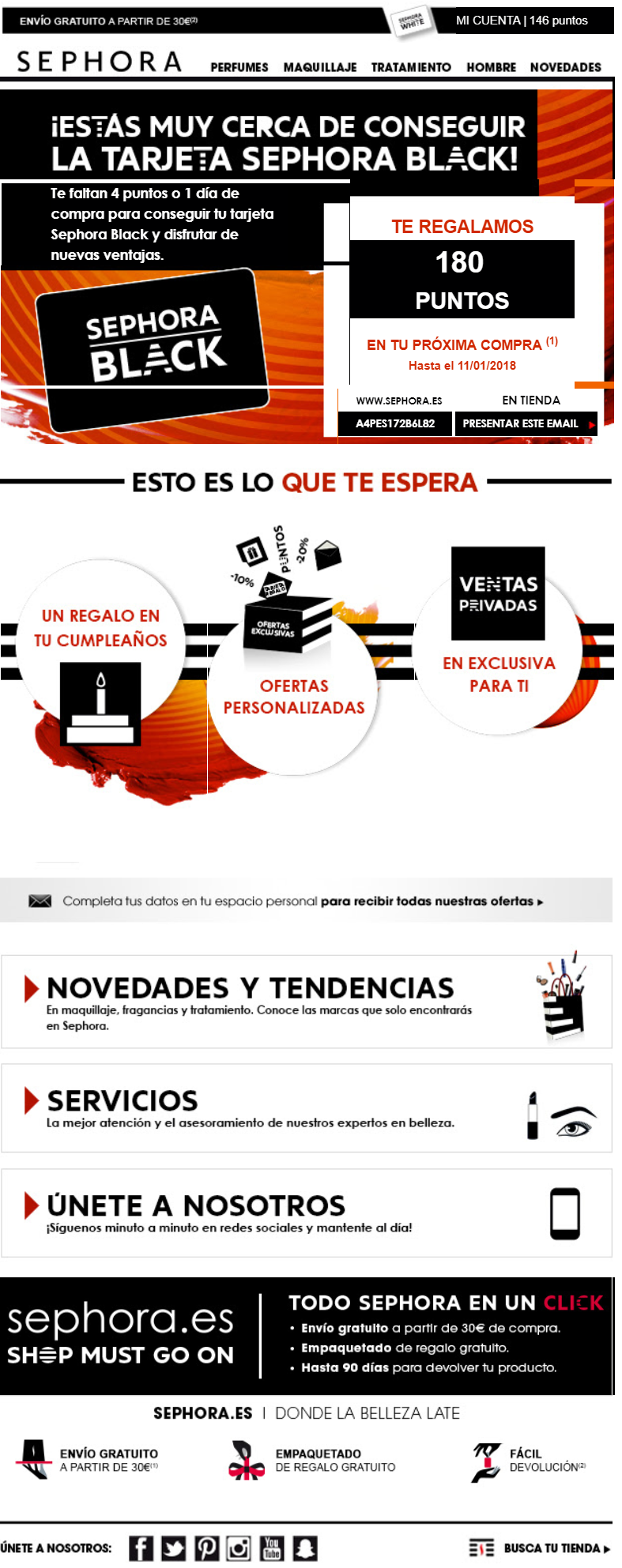
Loyalty email (Sephora)
